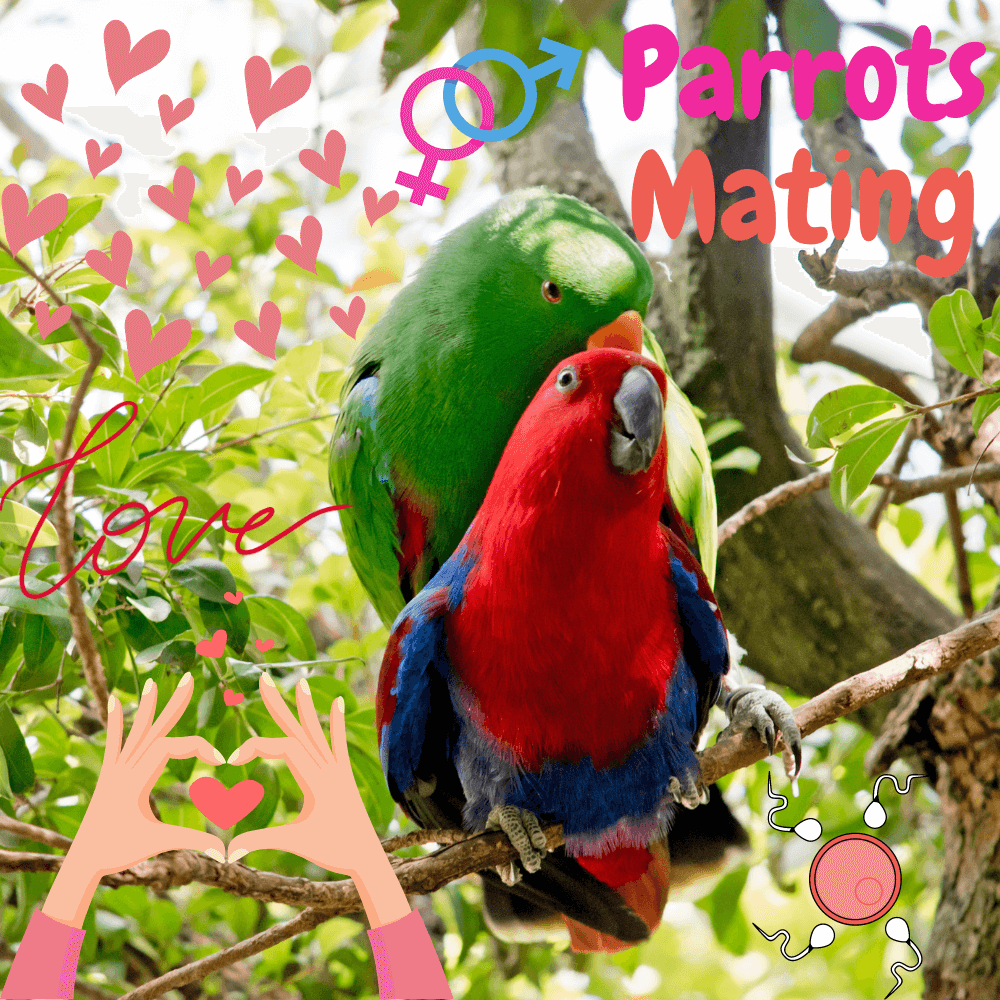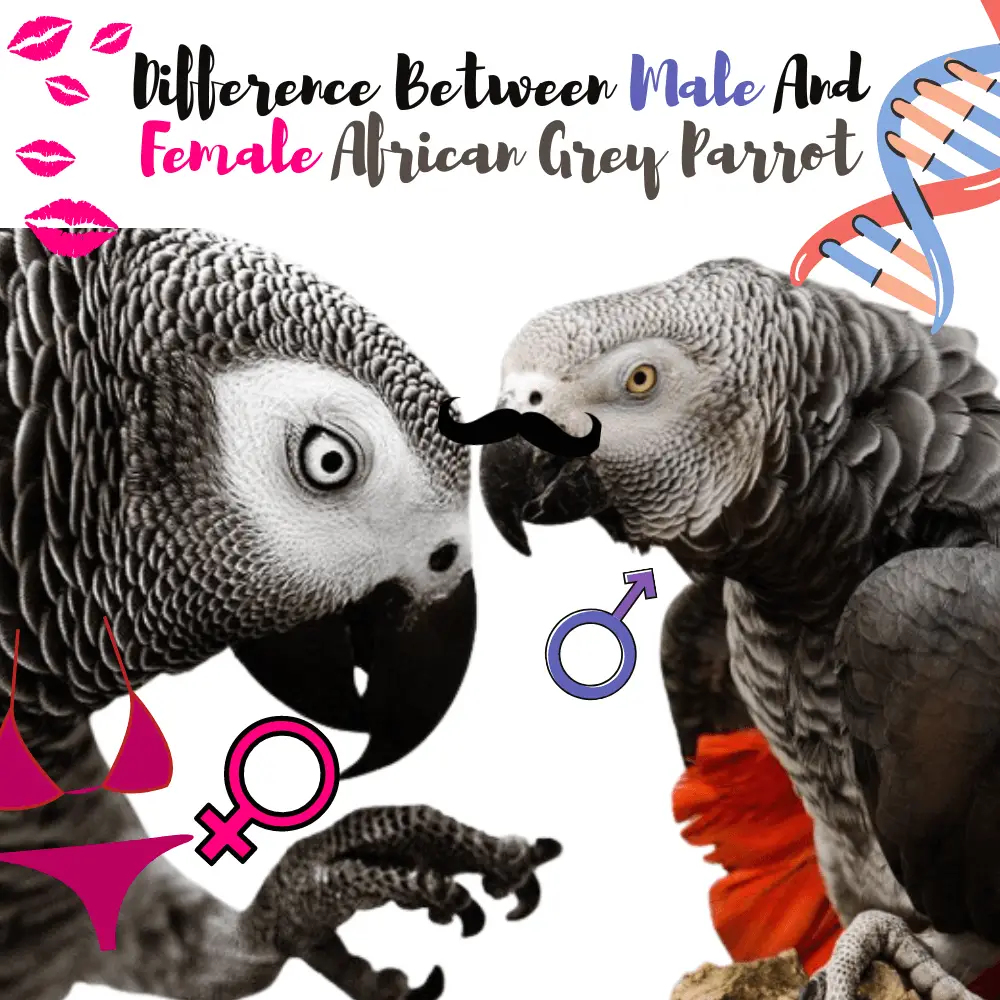
Sexual Behavior in parrots: In parrots, many common behaviors are aimed at establishing social relationships or are related to mating.
Feather smoothing is a good example. Face to face, two birds groom each other. The one who solicits this favor lowers his head to make it understood to his partner. Regurgitation is another expression of this exchange. The “becots” are the beginnings of the regurgitation behavior aimed at feeding the female during the display and during the brooding of the eggs.
Signs of Hormonal Behavior in Parrots
The male stands above, because it is he who will feed the female in case of laying. It is most often the bird whose character is the most assertive in relation to the other that “feeds” the latter. Just before taking action, he climbs up and down his head in jerks, these jolts indicating the rise of food in his crop. This allows the two psittacines to strengthen the bonds that unite them, the motivations being sexual.
This set of attitudes can be observed not only in a mixed pair (male + female) but also between two animals of the same sex. The social relationships observed then and the balance are similar to those described above, up to and including mating attempts. One is then more enterprising and the other more submissive. Therefore, the observation of reproductive behaviors is in no way a guarantee of owning a pair, at least in the sense that we understand it to aim at reproduction.
But there is also a period during which intraspecific relationships are neutral. It occurs between the end of weaning and the following breeding season. Parrots then interact much less with members of their colony. There are also less violent assaults and less frequent expressions of sexual behaviors.
Young people live in social groups before reaching sexual maturity and becoming aware of their attraction to the opposite sex. Contrary to the idea conveyed by avian behaviorist Johanne Vaillancourt, it seems that birds do not really choose their partner at this age, consciously or not.
Certainly, they make certain connections, perching in contact with other parrots and practicing mutual smoothing of feathers. But this finds no explanation of the sexual origin, especially since this behavior is observed as much between subjects of the same sex as between those of the opposite sex. This last observation has been verified even in the presence of a sufficient number of psittacines of close age to form male-female pairs.
Sexual Behavior in African Grey Parrots

Scientists believe that African greys are monogamous. They sometimes breed relatively close to each other in the wild, in colonies of up to several hundred pairs. In contrast, New World parrots move away from the group to the nest. Bonds formed between juveniles before sexual maturity may lead to the formation of a lasting union, but this is not an end in itself.
What is certain is that when both members of a pair are of reproductive age, the male is most of the time dominant within it. Among African greys, sexual behaviors have not been described in detail, but some are explicit. Both partners walk up and down, letting their wings drag.
They scratch each other with their paw and rub their beaks against each other. A kind of “beak fight” is sometimes the preliminary to regurgitation. The animal strutting, chest bulging, and neck feathers swollen, tail fan-shaped, emitting small giggles.
But in reality, few attitudes are likely to indicate reproductive behavior, since all those we have just described are already observed throughout the year. The breeding period just makes them a little more frequent. At the beginning of it, males become noticeably more aggressive.
Birds look for a place to nest and when they think they have found it, defend it from attackers, real or perceived. In nature, the nest is built 20 or 30 meters above the ground. The male and female arrange a cavity by digging it with their beaks, using the resulting sawdust to form a comfortable layer on the bottom.
Mating often takes place in several stages, because the female tends to repel her “Romeo” quite often (the blow of the migraine no doubt). It is the latter that sets in motion the copulation that allows the male to fertilize it.
When she feels ready, she adopts an unequivocal position, body pinned to the ground, rump, and head slightly raised. In mating novices, external signs are more openly displayed than in more experienced subjects. In the latter, the foreplay is less marked and the visible signs less numerous, which sometimes gives rise to a kind of “spontaneous mating” in the eyes of the holder.
It is thus possible for an informed observer to distinguish a beginner from a confirmed Dom Juan. The mating process can, as we have seen, go completely unnoticed in front of a couple that has already successfully laid. But reproductive behaviors are already so observed daily, as a mode of communication, that only the experience of the keeper can then make a difference.
Are You Sexually Frustrating Your Parrot?
SOURCE: MARLENE MC’COHEN




















